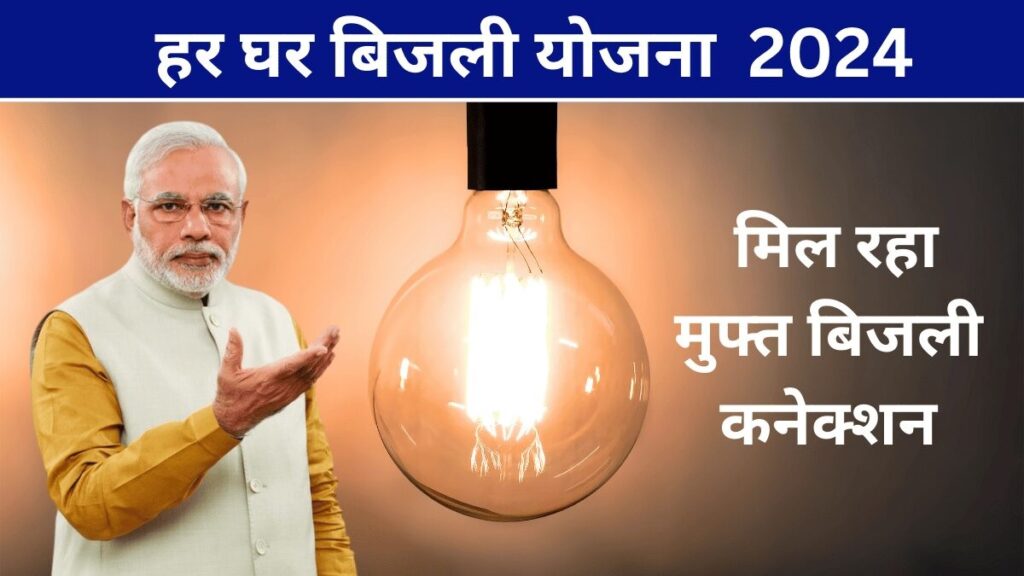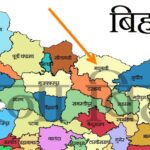Access to electricity is fundamental to socio-economic development and improving the quality of life. In the context of a country as vast and diverse as India, the challenge of providing consistent and universal access to electricity has been a monumental one. The ambitious government initiative “Har Ghar Bijli” (Electricity for Every Home) is a landmark in India’s drive towards universal electrification. The aim is not just to provide energy but to ensure that every household, regardless of its geographic location or economic condition, is connected to the national electricity grid.
Table of Contents
The Vision Behind Har Ghar Bijli
The Har Ghar Bijli initiative is part of the larger Pradhan Mantri Sahaj Bijli Har Ghar Yojana (Saubhagya), launched in September 2017 by the Indian government. It set an ambitious goal to electrify all households, particularly targeting the most remote and disadvantaged communities in the country.
The Need for Universal Electrification
Before the implementation of Saubhagya, millions of rural households lacked access to reliable electricity. This not only hampered their economic progress but also deprived them of basic modern amenities like lighting, education, and healthcare. In 2011, nearly 45% of rural households in India were without electricity. This stark gap posed a significant challenge for the nation to achieve inclusive development.
Electricity as a Driver of Development
Electricity is often viewed as the backbone of development. It powers industries, drives agricultural productivity, and is crucial for education and healthcare. For a country striving to uplift millions out of poverty, ensuring that electricity reaches every household was essential to providing a better standard of living. It is in this context that Har Ghar Bijli becomes a transformative mission, aiming to make reliable electricity a reality for all.
The Implementation Strategy of Har Ghar Bijli
Saubhagya Scheme: The Core of Har Ghar Bijli
The Saubhagya scheme is the cornerstone of the Har Ghar Bijli initiative. Under this scheme, the government set an ambitious timeline to provide free electricity connections to over 40 million households across the country. Priority was given to rural and economically weaker sections, where electricity access was traditionally limited.
Identification of Beneficiaries
One of the significant challenges of the scheme was identifying households that lacked electricity connections. The Socio-Economic and Caste Census (SECC) 2011 data was used to determine the beneficiaries. However, the scheme was inclusive in its approach, allowing even households not listed in the SECC data to apply for an electricity connection at a nominal cost.
Implementation Mechanism
The implementation of the Har Ghar Bijli initiative involved multiple stakeholders, including the Ministry of Power, State Electricity Boards, and Public and Private sector entities.
1. Grid Extension
The expansion of the electricity grid was a key component of the strategy. This involved upgrading and constructing substations, transformers, and transmission lines in remote and hard-to-reach areas. The scheme also aimed to reduce losses in transmission and distribution networks, which historically have been a major challenge in the Indian power sector.
2. Off-Grid Solutions
In regions where grid expansion was either not feasible or extremely expensive, the scheme focused on providing solar-powered standalone systems. This was particularly useful in mountainous regions, deserts, and remote islands, ensuring that even the most geographically isolated households had access to electricity.
Financial Mechanisms
To make electricity affordable for all, the government adopted a subsidy model. The scheme was largely funded by the central government, with some financial contribution from state governments. Households classified as Below Poverty Line (BPL) received free connections, while others were provided with electricity connections at highly subsidized rates.
Loans and Incentives for Discoms
To ensure that the implementing agencies—especially the Distribution Companies (Discoms)—had adequate resources to roll out the project, the government provided soft loans and financial incentives. These incentives were linked to milestones like the number of households electrified and the quality of service provided.
Progress and Achievements of Har Ghar Bijli
Since its inception, the Har Ghar Bijli initiative has been one of the most significant accomplishments in India’s power sector. The government declared in early 2019 that it had met its goal of electrifying all villages in India, a milestone celebrated nationally.
Rural Electrification Success
By April 2018, the government had achieved the electrification of all 597,464 census villages in India. This marked a major milestone in the country’s journey towards universal electrification. The Saubhagya scheme, and by extension Har Ghar Bijli, played a pivotal role in reaching the last mile of rural households.
Household Electrification
As of December 2018, more than 25 million households had been electrified under the Saubhagya scheme. By early 2019, the government had electrified all willing households that lacked access to electricity, fulfilling the promise of Har Ghar Bijli.
Challenges and Continuing Efforts
Despite the overwhelming success of the Har Ghar Bijli initiative, several challenges remain. For instance, while nearly all households now have electricity connections, the focus has shifted towards ensuring the reliability and quality of the electricity supply. Many rural areas, especially in states like Bihar and Uttar Pradesh, still experience frequent power outages.
Additionally, the financial health of Discoms remains a critical issue. Distribution companies have long struggled with high levels of debt, primarily due to under-recovering tariffs and operational inefficiencies. The government continues to work on reforms that ensure the sustainability of Discoms and the overall power sector.
Impact of Har Ghar Bijli on India’s Socio-Economic Landscape
Transforming Rural Lives
The Har Ghar Bijli initiative has had a transformative effect on the lives of millions of Indians, particularly in rural areas.
1. Improved Quality of Life
Access to electricity has vastly improved the quality of life in rural India. Households now enjoy extended hours of lighting, which has improved education outcomes for children, enabled businesses to operate more efficiently, and enhanced overall living conditions.
2. Education and Employment
Electricity has directly contributed to improved educational outcomes by enabling access to online resources and modern educational tools. Additionally, it has opened new avenues for employment, with more industries and businesses able to operate in electrified areas.
Health and Clean Energy
The Har Ghar Bijli initiative has also had a positive impact on public health. Before electrification, many households relied on kerosene lamps for lighting, which emitted harmful fumes and posed significant health risks. With electricity available, these households have transitioned to cleaner, safer sources of light. Moreover, healthcare facilities in rural areas, now equipped with electricity, are able to provide better services, including refrigeration for vaccines and advanced medical equipment.
Boosting the Economy
The expansion of electricity has been a significant driver of economic growth. By powering agriculture, small-scale industries, and cottage enterprises, electrification has contributed to increased productivity and income levels in rural India. It has also attracted more businesses to set up operations in previously underserved areas, creating jobs and boosting the local economy.
Challenges and the Road Ahead
While the Har Ghar Bijli initiative has been a success, there are still challenges that need to be addressed to ensure long-term sustainability.
Ensuring Continuous Supply
One of the key challenges is to provide 24×7 reliable electricity to all households. While connections have been provided, the quality and consistency of supply need improvement, particularly in remote and underserved areas.
Addressing the Financial Health of Discoms
The financial instability of Discoms continues to be a significant hurdle. High transmission and distribution losses, coupled with inadequate tariff collection, are ongoing challenges. The UDAY (Ujwal DISCOM Assurance Yojana) scheme aims to address some of these issues, but deeper reforms are required to ensure the viability of Discoms and prevent a collapse of the distribution system.
Renewable Energy Integration
Going forward, integrating renewable energy into the grid will be critical to ensuring sustainable and environment-friendly electricity. India is already making significant strides in solar and wind energy, and incorporating these sources into the electrification initiative will be key to meeting the growing energy demands of the population.
Conclusion
The Har Ghar Bijli initiative has been a monumental success, bringing electricity to millions of households across India. It stands as a testament to the Indian government’s commitment to ensuring inclusive development and improving the quality of life for all its citizens. However, the journey is far from over. To truly harness the power of electricity, the focus must now shift to ensuring reliability, sustainability, and the integration of renewable energy. In doing so, India can continue to pave the way towards a brighter, more electrified future for every citizen.
4o


